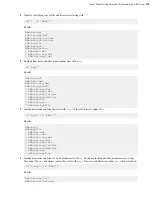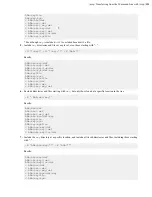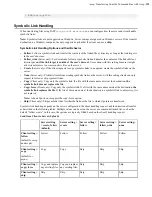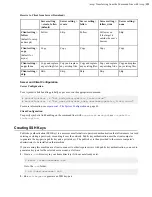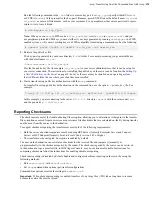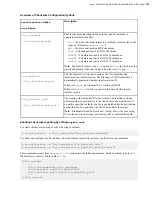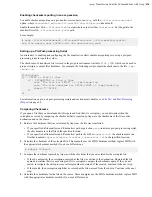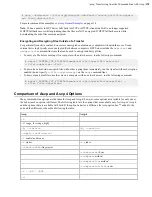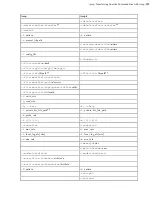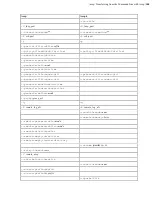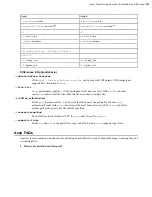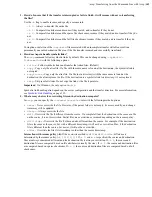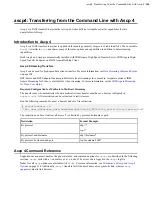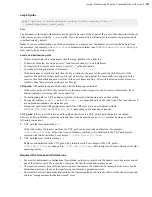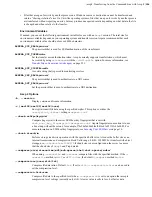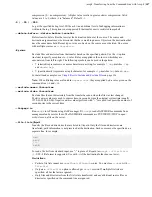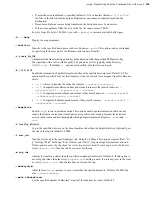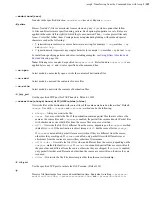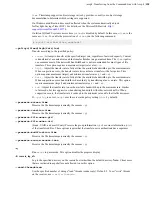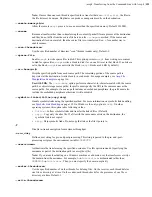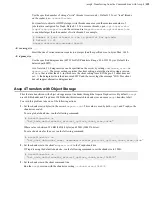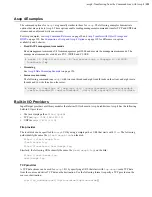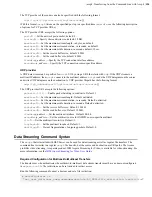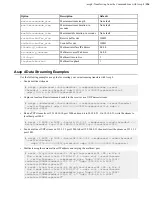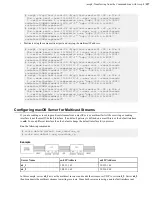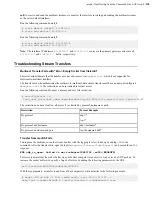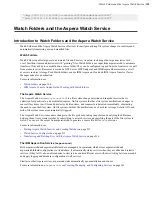
| ascp4: Transferring from the Command Line with Ascp 4 |
144
ascp4: Transferring from the Command Line with Ascp 4
Ascp 4 is a FASP transfer binary similar to Ascp but it has different strengths as well as capabilities that are
unavailable with Ascp.
Introduction to Ascp 4
Ascp 4 is a FASP transfer binary that is optimized for sending extremely large sets of individual files. The executable,
ascp4
, is similar to
ascp
and shares many of the same options and capabilities, in addition to data streaming
capabilities.
Both Ascp 4 and Ascp are automatically installed with IBM Aspera High-Speed Transfer Server, IBM Aspera High-
Speed Transfer Endpoint, and IBM Aspera Desktop Client.
Ascp 4 Streaming Transfers
Ascp 4 can be used for high-speed data stream transfers. For more information, see
on page 154.
HST Server and HST Endpoint licenses prohibit users from streaming video or media. A separate product, IBM
Aspera Streaming for Video, is available for video streaming. For more information, see the
Required Configuration for Multicast-to-Multicast Streaming
The transfer user who authenticates the data multicast stream transfer must have no docroot configured in
aspera.conf
. A file restriction can be set instead to restrict access.
Run the following command to unset a docroot and set a file restriction:
# asconfigurator -x
"set_user_data;user_name,
username
;absolute,AS_NULL;file_restriction,|
restriction
"
The restriction can be set to allow all access (*) or limited by protocol, hostname or path:
Restriction
Format Example
By protocol
udp://*
tcp://*
By protocol and hostname
udp://hostname*
By protocol, hostname, and port
tcp://hostname:5000*
Ascp 4 Command Reference
Supported environment variables, the general syntax, and command options for
ascp4
are described in the following
sections.
ascp4
exits with a
0
on success or a
1
on error. The error code is logged in the
ascp4
log file.
Note:
Not all
ascp
options are available with
ascp4
. For more information, see
on page 138. Additionally,
ascp4
transfers fail if the user's docroot is a symbolic link, whereas
ascp
supports symbolic link docroots.

